Cancellation Letter & Poem
A recent cancellation letter came into Touchstone’s Pipeworks Climbing in Sacramento, CA. The response is priceless.


Are Birthday Parties Worth It?

The Brass Tacks
Group party business, including birthday parties, is an undeniable source of revenue without which a majority of gyms could not survive. The level of importance of party business to a model is roughly correlated to the gym’s location. Suburban or rural gyms tend to rely more on revenue from party business than urban gyms; but that is not a rule. Urban gyms see a lot of group business, yet fewer birthday parties than their less metropolitan counterparts. Many gyms are unwilling to comment on the percentage of revenue they attribute to group party and birthday party business respectively. However, an informal survey of gyms show a 15-20% of revenue coming from the overall group party business and 5-7% coming explicitly from birthday party business. When there is a concentrated amount of gyms in an area, there is a natural differentiation between the competitors as market forces are at work. This means that as most gyms choose not to close their doors to party revenue, there are a couple that do. However, if anything, gyms have responded by offering fewer party slots or by out-pricing themselves from the bulk of the business, thus increasing the profitability of each party, while obliging their membership population.Size Doesn’t Matter
It is not the amount of revenue that you get from party business that really matters, it’s where it leads. Unfortunately, most gyms don’t explicitly track how many day passes or memberships originated from someone who was first introduced to the gym through a group party. There are fields in Rock Gym Pro and other POS software, but many gyms aren’t taking the time to build that data set. The data on party converts may not be tracked, but most gyms capitalize on the positive energy that comes from having a party. When a parent tells Paul Short, the owner of Inspire Rock in Spring, TX, that they had no idea their child would love climbing as much as they did, he goes right into his pitch for the types of programming offered by his gym. Short looks at participants as being “members of the future”. Luke Bertelsen, the manager of Rocks and Ropes in Tucson, AZ, confidently states that “parties are a great initial contact point for programming” and he sees it as “perfect in-house advertising”. This is the view point that many managers take. Parties are basically marketing that make you profit from dollar one.All Dressed Up and Nowhere to Go
Dan Hague of Rise Up, in Lynchburg, VA aptly points that, “parties are good for gyms when they are not operating at capacity.” This applies to most gyms, as it is a rare to always operate at capacity. It doesn’t take much to know what nights of the week or what weekends of the year show the greatest usage by members and day-pass users. This is a simple function in any gym management software. The key is to understand this ebb and flow and routinely schedule parties when the facility is under utilized. Gyms do not operate at capacity at all hours of operation. It doesn’t take much to know what nights of the week or what weekends of the year show the greatest usage by members and day-pass users. This is a simple function in any gym management software. The key is to understand this ebb and flow and routinely schedule parties when the facility is under utilized. For the gyms that have a higher percentage of clientele that climb outside, it is easiest to schedule parties at times that don’t conflict with the Tuesday and Thursday evening crowds. For gyms with a lower percentage of outdoor climbers, birthday parties are a weekend based income stream. In regards to opportunity cost, parties compare well to hosting competitions. For example, profitability is marginal unless the process is truly dialed in for efficiency. They both build stoke, build community, and are a great form of advertising. Actually, parties may harbor more potential for bringing in new members than competitions, while tying up significantly less overhead.The Infamous Birthday Party
The era of playing pin the tail on the donkey at home for Johnny’s birthday seem to be over. Now people want trampoline parks, laser tag, life-sized video games, and urban jungles. This increased competition has put pressure on climbing gyms, but it has also delineated a playing field for the pricing structures that gyms should reference. Though every birthday package is different, a gym should make sure it is not missing out on the opportunity for optimized revenue. Most party options offer two hour time slots, a dedicated room for food, and the featured activity. The main differences are the price per participant, the amount of participants allowed, and the amount of staff needed to run the activity. Staffing for parties ranges from 3 to 6 climbers per staff member, a number that greatly impacts the bottom line on party profitability. If your competitors have a cap of 8 participants, can you reprice to win business and be more profitable than you were yesterday? Many gyms have opted to use Auto-belays for parties as fewer staff are required to manage a group. Though auto-belays are a debated topic in gym circles, they have slowly become a standard in gyms for their usefulness in party management as well as serving clients that are without belay partners. In the long run, this will greatly economize parties. This is easily witnessed at FunTopia’s and Clip-n-Climb’s where few staffers manage large groups by clipping one client in and immediately facilitating another client. The model that is increasingly popular in the birthday party climbing world is the one with a dedicated party space denoted by shorter walls, auto-belays and integrated play area climbing structures, like mountains and castles. It’s a far stretch from the gyms some of us grew up in, but they are actually really cool and innovative. This is the model that doesn’t just enjoy its party business, but intends to grow it.The Road to Tomorrow
It’s commonly mentioned that a large percentage of indoor climbers are not regular outdoor climbers. This population is the engine of growth in the indoor climbing industry. In this same vein, not everyone googled their local climbing gym after reading about the historic Dawn Wall project. Many people first experience the joy of social fitness through a school group, girl scout troop, team activity or birthday party. In the indoor climbing industry it is one of our roles to provide great experiences to new comers and regulars alike. The more new comers a gym can convert, the more it is winning. Not only at the game of business but also at spreading the love of climbing. We want there to be more gyms, more opportunities, and more investment to fund industry growth. Party business is a dually profitable form of advertising. Revenue is taken in during the party as your gym advertises itself to dozens of potential future members every week. What gym can say this about any other form of advertising? Really, it’s like having your birthday cake and eating it too.Mesa Rim Coming to Reno
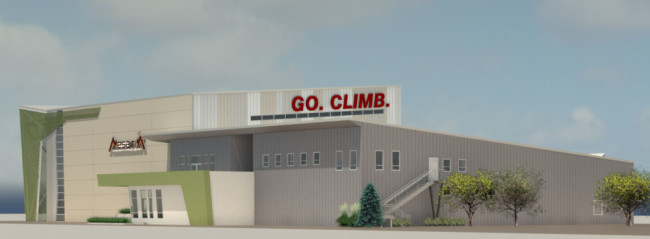
Slo Op Opens 2nd Facility
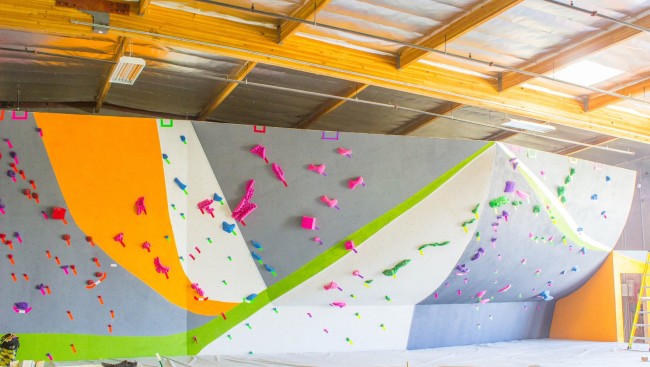
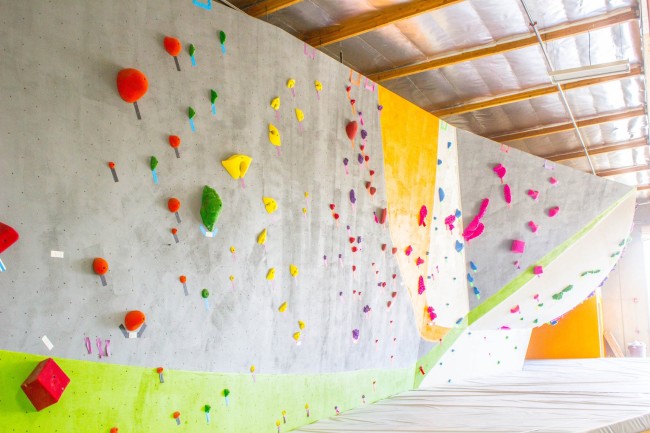 The gym’s build was done almost entirely by SLO Op members, staff, and eager Santa Maria area residents. “From the contractors, to the painters, to the electrician, they’ve all contributed their efforts to help us get this off the ground for a lot less than a normal contracting job would be; putting in real elbow grease to build something you believe in is the SLO Op way,” says Horowitz, who built and designed The Pad alongside her husband, Yishai -. Even the gym’s manager, Dustin Wise, has been spending long hours alongside the paid contractors, hiring staff and working to prepare the gym to open during breaks.
After months of significant delays, the gym is poised to open and hopes to make its mark in the climbing world. Over three times bigger than the existing SLO Op location, The Pad, features a 10,000 square foot warehouse with truly aggressive and ground breaking terrain. Designer Yishai Horowitz’s goal is to maximize space, push boundaries of design and aesthetics, and he took his over ten years of experience visiting gyms and operating the SLO Op in various stages to figure out what would work best for the club. You’ll find steep, inspiring terrain when you visit, that’s for sure. It’s stand out features are the wave wall to snow-cone, a slab wall giving way to an arching arete and the impressive archway (inspired by the bill of Yishai’s ubiquitous ball caps) that’s so big the city required fire sprinklers installed in it.
The gym’s build was done almost entirely by SLO Op members, staff, and eager Santa Maria area residents. “From the contractors, to the painters, to the electrician, they’ve all contributed their efforts to help us get this off the ground for a lot less than a normal contracting job would be; putting in real elbow grease to build something you believe in is the SLO Op way,” says Horowitz, who built and designed The Pad alongside her husband, Yishai -. Even the gym’s manager, Dustin Wise, has been spending long hours alongside the paid contractors, hiring staff and working to prepare the gym to open during breaks.
After months of significant delays, the gym is poised to open and hopes to make its mark in the climbing world. Over three times bigger than the existing SLO Op location, The Pad, features a 10,000 square foot warehouse with truly aggressive and ground breaking terrain. Designer Yishai Horowitz’s goal is to maximize space, push boundaries of design and aesthetics, and he took his over ten years of experience visiting gyms and operating the SLO Op in various stages to figure out what would work best for the club. You’ll find steep, inspiring terrain when you visit, that’s for sure. It’s stand out features are the wave wall to snow-cone, a slab wall giving way to an arching arete and the impressive archway (inspired by the bill of Yishai’s ubiquitous ball caps) that’s so big the city required fire sprinklers installed in it.
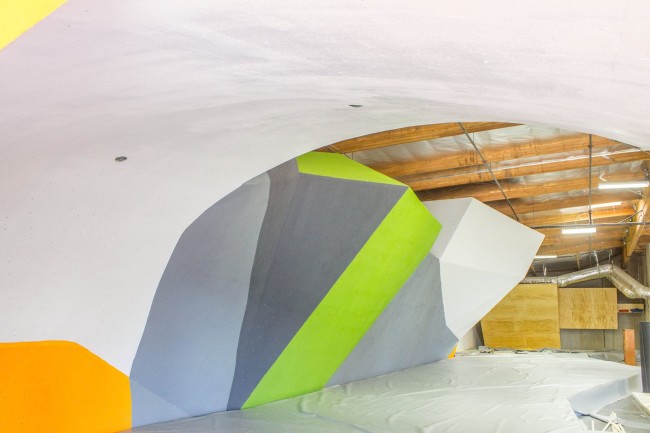 SLO Op Climbing is a 501c7 non profit social club that’s been around in various forms for over ten years, and was the country’s first non-profit bouldering gym. Despite its name, it is not a co-op. It started out as something close to it with its first build and fifteen members in a storage unit, but over the years, the club has burgeoned to over 1000 members and a 3500 square foot facility with weight room and yoga classes. SLO Op is a club that maintains facilities and programs that better the climbing community and does regular outreach to at risk youth and veterans in the area. Membership with SLO Op grants access to both the SLO Op 24/7 facility and The Pad’s extended hours facility (we hope to make it 24/7 as well over time as the community builds).
What are SLO Op’s next goals? “Definitely a larger facility in San Luis Obispo,” says Horowitz, “But that’s a much more expensive proposition that we hope The Pad will be able to help fund.” Any other locations? Time will tell. SLO Op’s grassroots and cost-effective approach to building gyms is getting harder and harder to execute with increased regulation requirements at the local and state levels, so expansion really depends on the resources available at the time. SLO Op welcomes inquiries from anyone interested in getting started with their own project.
SLO Op Climbing is a 501c7 non profit social club that’s been around in various forms for over ten years, and was the country’s first non-profit bouldering gym. Despite its name, it is not a co-op. It started out as something close to it with its first build and fifteen members in a storage unit, but over the years, the club has burgeoned to over 1000 members and a 3500 square foot facility with weight room and yoga classes. SLO Op is a club that maintains facilities and programs that better the climbing community and does regular outreach to at risk youth and veterans in the area. Membership with SLO Op grants access to both the SLO Op 24/7 facility and The Pad’s extended hours facility (we hope to make it 24/7 as well over time as the community builds).
What are SLO Op’s next goals? “Definitely a larger facility in San Luis Obispo,” says Horowitz, “But that’s a much more expensive proposition that we hope The Pad will be able to help fund.” Any other locations? Time will tell. SLO Op’s grassroots and cost-effective approach to building gyms is getting harder and harder to execute with increased regulation requirements at the local and state levels, so expansion really depends on the resources available at the time. SLO Op welcomes inquiries from anyone interested in getting started with their own project. Credit Card Liability Shift is Coming
 There’s a change coming this fall and business of all kinds, including climbing gyms and gear shops, need to be ready. The change takes the form of a new way to make credit card transactions.
Beginning October 1st, 2015 customers will stop swiping the credit card. Instead, they will insert their card into a slot, just like people do in much of the rest of the world, where the credit card machine will read a microchip, not a magnetic stripe. The customer will still be signing for the time being, but the new system also enables the use of PIN numbers, if card issuers decide to add them to their cards.
These new credit cards called, EMV (short for Europay, MasterCard, Visa) are basically the same as your standard magnetic stripe “swipe-and-sign” cards, only they’re more secure.
The added security is packed into a small, “smart” microprocessor computer chip embedded in the card. The metallic microchip, which Visa claims is nearly impossible to counterfeit, stores and safeguards private cardholder data. Every time the card is used, the chip generates a unique, one-time authentication cryptogram signature that proponents of the technology say is incredibly difficult to duplicate.
“It’s quite difficult to clone the chip,” Eric Dunn, senior vice president of payments and commerce solutions at Intuit, told Entrepreneur Magazine. “It’s not that hard, unfortunately, to clone a magnetic stripe card, so this means bad guys who try to earn a nefarious living by skimming magnetic card numbers and recreating magnetic stripe cards can’t do that when the world migrates to EMV chip cards.”
The U.S. is the last major market to still use the old-fashioned swipe-and-sign system, and it’s a big reason why almost half the world’s credit card fraud happens in America, despite the country being home to about a quarter of all credit card transactions.
What this means for climbing gyms and retailers that accept credit cards is very clear. They must purchase and implement what some call, “chip-and-dip” readers or face the possibility of paying out for any fraudulent charges. This “liability shift” is the driving force behind the new chips and is not something that should be ignored.
There’s a change coming this fall and business of all kinds, including climbing gyms and gear shops, need to be ready. The change takes the form of a new way to make credit card transactions.
Beginning October 1st, 2015 customers will stop swiping the credit card. Instead, they will insert their card into a slot, just like people do in much of the rest of the world, where the credit card machine will read a microchip, not a magnetic stripe. The customer will still be signing for the time being, but the new system also enables the use of PIN numbers, if card issuers decide to add them to their cards.
These new credit cards called, EMV (short for Europay, MasterCard, Visa) are basically the same as your standard magnetic stripe “swipe-and-sign” cards, only they’re more secure.
The added security is packed into a small, “smart” microprocessor computer chip embedded in the card. The metallic microchip, which Visa claims is nearly impossible to counterfeit, stores and safeguards private cardholder data. Every time the card is used, the chip generates a unique, one-time authentication cryptogram signature that proponents of the technology say is incredibly difficult to duplicate.
“It’s quite difficult to clone the chip,” Eric Dunn, senior vice president of payments and commerce solutions at Intuit, told Entrepreneur Magazine. “It’s not that hard, unfortunately, to clone a magnetic stripe card, so this means bad guys who try to earn a nefarious living by skimming magnetic card numbers and recreating magnetic stripe cards can’t do that when the world migrates to EMV chip cards.”
The U.S. is the last major market to still use the old-fashioned swipe-and-sign system, and it’s a big reason why almost half the world’s credit card fraud happens in America, despite the country being home to about a quarter of all credit card transactions.
What this means for climbing gyms and retailers that accept credit cards is very clear. They must purchase and implement what some call, “chip-and-dip” readers or face the possibility of paying out for any fraudulent charges. This “liability shift” is the driving force behind the new chips and is not something that should be ignored.

liability shift
Right now, if you process a fraudulent card, the card issuer absorbs the cost, whether it be Bank of America, Chase, Capital One, etc. After the “liability shift” hits, if someone pays with a fraudulent chip card and you haven’t upgraded to an EMV reader yet, the liability falls on you. The card issuer is off the hook. According to MasterCard’s Carolyn Balfany, the company’s expert on all things related to the new EMV payment system, “Whenever card fraud happens, we need to determine who is liable for the costs. When the liability shift happens, what will change is that if there is an incidence of card fraud, whichever party has the lesser technology will bear the liability,” Balfany told the Wall Street Journal. “So if a merchant is still using the old system, they can still run a transaction with a swipe and a signature. But they will be liable for any fraudulent transactions if the customer has a chip card. And the same goes the other way – if the merchant has a new terminal, but the bank hasn’t issued a chip and PIN card to the customer, the bank would be liable.”What’s the Cost
Intuit, the company that produces Quicken and TurboTax financial software discovered that nearly 60% of those in a recent survey cited the cost of a new terminal or reader as the top reason keeping them from upgrading, while 85% who aren’t making the switch are unaware of the financial and legal liabilities they will be responsible for starting in October. “The biggest barriers for small businesses to become EMV-compliant are cost and lack of time or resources required to research terminals,” Eric Dunn, Intuit’s senior vice president for payments and commerce solutions, told The Street. Depending on the number of terminals and the payment vendor, a climbing gym should expect to to pay several hundred to several thousand dollars this year to make the proper upgrades. Each new machine is estimated to cost about $250, and installation might cost twice that. American Express is offering each small business $100 towards the upgrade, but that only goes so far. And other companies such as Chase Paymentech, First Data, Ingenico, Hypercom and Verifone are offering full-sized, more fully featured Wi-Fi countertop chip terminals ranging from $150 to $300. If you’re one of the gyms that uses Square to process credit cards you’re in luck. The company has a $29 reader that will accept both magnetic-stripe and chip cards, and can be used with iPhones, iPads and Android devices. The card deck-sized portable reader, which wirelessly connects to smartphones, tablets and Square Stand, also processes contactless NFC (near field communications) transactions, like Apple Pay and Google Wallet payments. Stephanie Ericksen, global risks products vice president at Visa, suggested in Entrepreneur that you shop around for the best EMV card reader deal, just as you would if you were looking to upgrade your cellphone. “Now is a good time to see if you can’t get a payment system that’s even cheaper and better than what you had before,” she said.Organizers Burnt Over Comp Poster
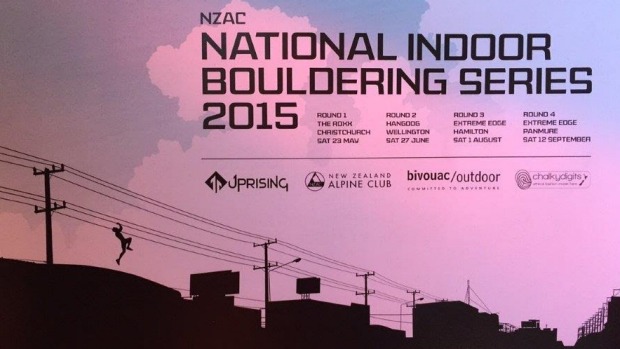
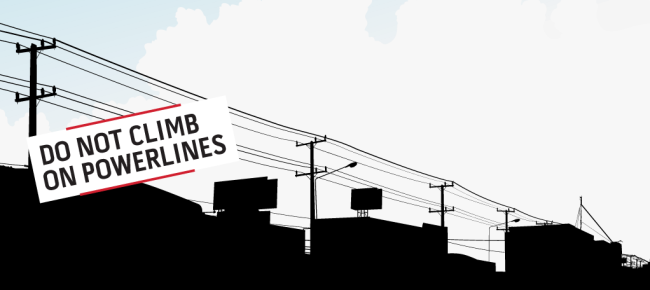
USAC & Skratch Labs Create Best All Around Award
 Press Release:
USA Climbing, the United States National Governing Body for the sport of competition climbing announced today that Skratch Labs will sponsor the first ever Youth All Around award, to be presented in Kennesaw, GA next month at the 2015 Youth Sport and Speed National Championships. There will be two winners of this award (one male and one female) and their results at Youth Bouldering Nationals, Youth Sport Nationals, and Youth Speed Nationals will be determining the ranking of this award. In addition to driving the creation of this prestigious award, Skratch Labs will also be present in the Coaches’ Lounge in Kennesaw to discuss hydration and performance principles with all USA Climbing Coaches.
“The Youth All Around Award is a fantastic extension of our support for USA Climbing” said Jay Peery, Vice President, Sales at Skratch Labs. “As a company, we support the idea of a balanced approach to life, and the award’s focus on athletes who excel across the entire spectrum of competitive climbing represents that perfectly”
“I’ve always wanted a way to recognize those athletes that are at the top of their game in all of our disciplines” said USA Climbing CEO Kynan Waggoner. “With the support Skratch Labs, a company that is primarily interested in maximizing the performance of our athletes, we’re able to highlight those male and female athletes that “do it all” within USA Climbing.”
Press Release:
USA Climbing, the United States National Governing Body for the sport of competition climbing announced today that Skratch Labs will sponsor the first ever Youth All Around award, to be presented in Kennesaw, GA next month at the 2015 Youth Sport and Speed National Championships. There will be two winners of this award (one male and one female) and their results at Youth Bouldering Nationals, Youth Sport Nationals, and Youth Speed Nationals will be determining the ranking of this award. In addition to driving the creation of this prestigious award, Skratch Labs will also be present in the Coaches’ Lounge in Kennesaw to discuss hydration and performance principles with all USA Climbing Coaches.
“The Youth All Around Award is a fantastic extension of our support for USA Climbing” said Jay Peery, Vice President, Sales at Skratch Labs. “As a company, we support the idea of a balanced approach to life, and the award’s focus on athletes who excel across the entire spectrum of competitive climbing represents that perfectly”
“I’ve always wanted a way to recognize those athletes that are at the top of their game in all of our disciplines” said USA Climbing CEO Kynan Waggoner. “With the support Skratch Labs, a company that is primarily interested in maximizing the performance of our athletes, we’re able to highlight those male and female athletes that “do it all” within USA Climbing.” 






